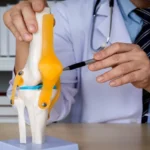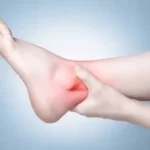Introduction
Chronic pain is more than just discomfort—it is a condition that affects millions worldwide, often lasting for months or even years. Unlike acute pain, which serves as a warning signal for injury or illness, chronic pain persists beyond normal healing time and can significantly impact quality of life. Understanding the causes, recognizing the symptoms, and exploring treatment options is essential for effective pain management.
What Is Chronic Pain?
Chronic pain is typically defined as pain lasting for 12 weeks or longer, even after the initial injury or illness has healed. It may be constant or intermittent, mild or severe, and can affect any part of the body.
Acute Pain vs. Chronic Pain
- Acute Pain: Temporary, linked to a specific injury or illness, improves with healing.
- Chronic Pain: Persists for months or years, sometimes without a clear cause.
Causes of Chronic Pain
Chronic pain can develop from multiple factors, often overlapping.
1. Injury and Trauma
Old injuries, fractures, or surgeries may leave lasting nerve damage that causes long-term pain.
2. Nerve Damage (Neuropathic Pain)
Conditions like diabetes, shingles, or spinal cord injuries can lead to nerve-related chronic pain.
3. Inflammatory Conditions
Arthritis, autoimmune disorders, and inflammatory bowel disease often cause persistent pain due to ongoing inflammation.
4. Chronic Illnesses
Diseases such as cancer, multiple sclerosis, and fibromyalgia are strongly linked to chronic pain.
5. Unknown Causes
In some cases, no clear cause is found. This can make treatment more challenging and frustrating for patients.
Common Symptoms of Chronic Pain
Chronic pain often extends beyond physical discomfort, affecting mental and emotional health.
Physical Symptoms
- Continuous or recurring pain
- Stiffness and reduced mobility
- Muscle aches or joint pain
- Fatigue and sleep disturbances
Emotional and Mental Symptoms
- Anxiety and depression
- Irritability and mood swings
- Difficulty concentrating (known as “brain fog”)
- Reduced quality of life and productivity
Risk Factors for Chronic Pain
Certain factors increase the likelihood of developing chronic pain:
- Age: Older adults are more prone due to degenerative conditions.
- Occupation: Jobs involving heavy lifting or repetitive movements.
- Lifestyle: Poor posture, lack of exercise, and obesity.
- Mental Health: Stress, trauma, or depression can worsen pain perception.
Treatment Options for Chronic Pain
Chronic pain management often requires a multidisciplinary approach that combines medical, physical, and psychological treatments.
1. Medications
- Over-the-counter (OTC): Acetaminophen, NSAIDs (ibuprofen, aspirin).
- Prescription drugs: Muscle relaxants, antidepressants, anticonvulsants, and opioids (used cautiously).
2. Physical Therapy
Exercises, stretching, and strengthening routines help improve mobility and reduce pain intensity.
3. Interventional Procedures
- Injections (nerve blocks, corticosteroids)
- Electrical stimulation (TENS units)
- Minimally invasive surgeries in severe cases
4. Psychological Approaches
- Cognitive Behavioral Therapy (CBT): Helps patients manage pain perception.
- Mindfulness & Meditation: Reduces stress and enhances coping mechanisms.
5. Lifestyle Changes
- Regular physical activity
- Balanced diet to reduce inflammation
- Proper sleep hygiene
- Stress management techniques
6. Alternative and Complementary Therapies
- Acupuncture
- Massage therapy
- Chiropractic care
- Herbal and natural remedies (with professional guidance)
Living with Chronic Pain: Coping Strategies
- Build a strong support network of family, friends, or support groups.
- Track symptoms with a pain journal to identify triggers.
- Stay active within limits to prevent stiffness.
- Seek professional counseling if pain affects mental health.
FAQs
1. How do I know if my pain is chronic?
If pain lasts for 12 weeks or more and doesn’t improve with standard treatment, it is considered chronic.
2. Can chronic pain be cured completely?
In many cases, chronic pain cannot be fully cured but can be managed effectively with proper treatment.
3. Is chronic pain only physical?
No, it also affects emotional and mental health, often leading to stress, anxiety, and depression.
4. What is the best treatment for chronic pain?
There is no single solution. A personalized plan combining medications, physical therapy, and lifestyle changes works best.
5. Can exercise help with chronic pain?
Yes, low-impact exercises like swimming, yoga, and walking can reduce stiffness and improve overall well-being.
Conclusion
Chronic pain is a complex condition that affects the body, mind, and overall lifestyle. While it may not always be curable, it can be managed effectively through medical treatment, therapy, lifestyle changes, and coping strategies. By understanding its causes, symptoms, and available treatments, individuals can take proactive steps to improve their quality of life and regain control over their health.











